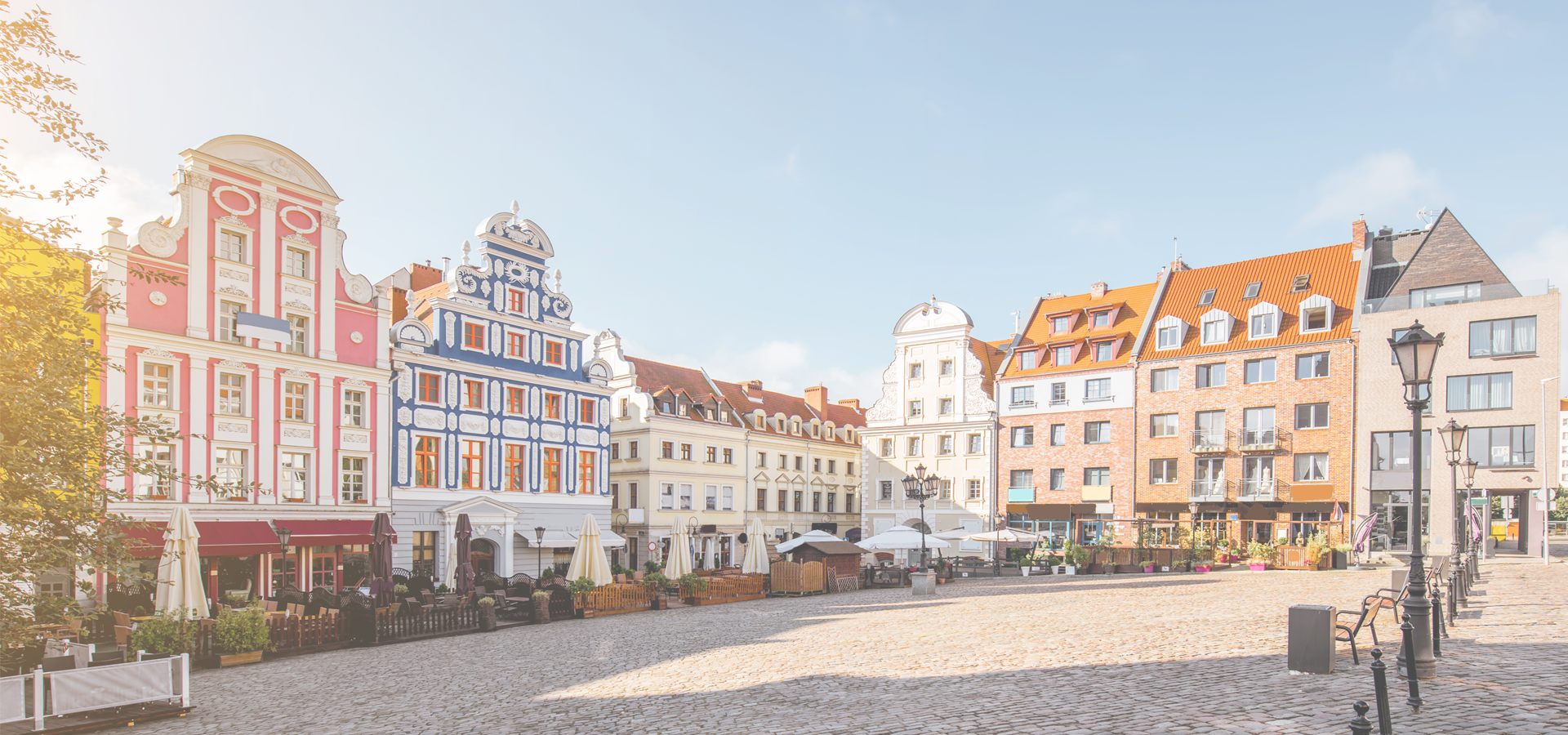Gryfice, West Pomeranian Voivodeship, Poland
🇵🇱 Gryfice is a historic town in Pomerania, north-western Poland. It is the capital of Gryfice County in West Pomeranian Voivodeship (since 1999), previously in Szczecin Voivodeship (1975–1998). The town is situated approximately 22 km from the Baltic Sea coast and seaside resorts.
History The region was part of Poland during the reign of the first Polish rulers Mieszko I and Bolesław I the Brave. The Battle of Niekładź took place in the area of Gryfice in 1121, in which Polish ruler Bolesław III Wrymouth defeated Wartislaw I, Duke of Pomerania and Swantopolk I, Duke of Pomerania. The area was part of the Duchy of Pomerania, a vassal state of Poland, which later on separated itself from Poland as a result of the fragmentation of Poland.
In 1262 Wartislaw III, Duke of Pomerania founded a town under Lübeck law on the Rega river to attract German settlers. After his death, his successor, Barnim I, Duke of Pomerania, named the settlement Civitat Griphemberch super Regam (Middle High German 'Griphemberch' meaning Griffin's mountain) after the coat of arms symbol of the Dukes of Pomerania. In 1365 the town entered the Hanseatic League and prospered due to the right of free navigation on the Rega.
A town wall was built and at the end of the 13th century the construction of the St. Mary's church was begun. In a document of 1386 a Latin school is mentioned, which is generally called the oldest in Pomerania.
Modern era In the 16th century, the local Germans pursued a policy of Germanisation towards the indigenous population, which, however, did not bring results quickly. At that time, some of the indigenous peasants fled to Poland, while Scottish immigrants settled in the town. As a result of the Thirty Years' War, the population of the town decreased dramatically. The town was occupied by the Imperial and Swedish armies. After the death of the last Pomeranian Duke and by the Treaty of Westphalia Greifenberg became part of Brandenburg-Prussia in 1648 and part of Imperial Germany in 1871. In 1818 the town became the capital of the Greifenberg district (Kreis Greifenberg).
In 1894 the town was connected to the railway line Dąbie (Altdamm) - Kołobrzeg (Kolberg). On July 1, 1896, the Greifenberger Kleinbahn was opened, a narrow-gauge railway today used as a railway Museum. In 1933 a Polish association of agricultural workers was established in Gryfice. Local Poles and Jews were subjected to increased repressions, after the Nazis came to power in Germany in 1933. After the German invasion of Poland, forced labourers from Poland were brought to the town.
At the end of World War II, on March 5, 1945, the Soviet Red Army conquered the town, and on March 8, Poles entered the town. Approximately 40 per cent of the town was destroyed, however many historical monuments stayed intact or were reconstructed. Following the post-war boundary changes, the town became part of Poland. Initially called Zagórze, it was eventually given the Polish name Gryfice. The Germans who did not escape during the battle with the Soviets, were expelled and the town was populated with Poles, some of them expellees themselves from Polish areas annexed by the Soviet Union. The post-war administration of Gryfice was created with the participation of the just-freed Polish forced labourers.
After the war, the life of the town was being rebuilt. In 1945, the first post-war schools, a hospital and a cinema were opened and the following year a mill, a gasworks and a marmalade factory were opened. In 1948 a sugar factory was established, which already in 1951 was one of the leading sugar factories in Poland.
Demographics Between its foundation and 1945, Greifenberg was predominantly inhabited by German-speaking people. By the 18th century, almost all inhabitants where Lutheran Protestants, with small Jewish and Catholic minorities. With the expropriation and expulsion of the German inhabitants at the end of World War II and the occupation of the vacated buildings by Polish settlers, the majority of its population has been composed of Roman Catholics.
Europe/Warsaw/West_Pomeranian_Voivodeship

Gryfice has a population of over 16,600 people. Gryfice also forms the centre of the wider Gryfice County which has a population of over 60,773 people.
To set up a UBI Lab for Gryfice see: https://www.ubilabnetwork.org Twitter: https://twitter.com/UBILabNetwork
Twin Towns, Sister Cities Gryfice has links with:
🇵🇱 Gryfów Śląski, Poland 🇩🇪 Güstrow, Germany 🇩🇪 Meldorf, Germany🇩🇪 Bad Schwartau 53.917
🇨🇦 Prince George 53.917
🇷🇺 Prokopyevsk 53.927
🇩🇪 Ostvorpommern 53.93
🇧🇾 Partyzanski 53.951
🇧🇾 Kastrychnitski 53.85
🏴 Poulton-le-Fylde 53.847
🇦🇹 Deutschlandsberg 15.2
🇮🇹 Barcellona Pozzo di Gotto 15.221
🇵🇱 Gorzów Wielkopolski 15.242
🇦🇹 Bruck an der Mur 15.267
Locations Near: Gryfice 15.1833,53.9
🇵🇱 Kamień Pomorski 14.767,53.967 d: 28.3
🇵🇱 Kołobrzeg 15.583,54.183 d: 40.9
🇵🇱 Stargard 15.039,53.34 d: 63
🇵🇱 Świdwin 15.767,53.783 d: 40.4
🇵🇱 Police 14.567,53.533 d: 57.5
🇵🇱 Drawsko Pomorskie 15.8,53.533 d: 57.5
🇵🇱 Szczecin 14.631,53.388 d: 67.6
🇵🇱 Myślibórz 14.867,52.933 d: 109.5
🇵🇱 Koszalin 16.189,54.189 d: 73.1
🇵🇱 Gorzów Wielkopolski 15.242,52.738 d: 129.3
Antipodal to: Gryfice -164.817,-53.9
🇹🇴 Nuku'alofa -175.216,-21.136 d: 16267
🇵🇫 Papeete -149.566,-17.537 d: 15763.7
🇦🇸 Pago Pago -170.701,-14.279 d: 15579.5
🇼🇸 Apia -171.76,-13.833 d: 15518.4
🇺🇸 Hilo -155.089,19.725 d: 11775.4
🇺🇸 Maui -156.446,20.72 d: 11679
🇺🇸 Maui County -156.617,20.868 d: 11664.2
🇺🇸 Wailuku -156.505,20.894 d: 11660.3